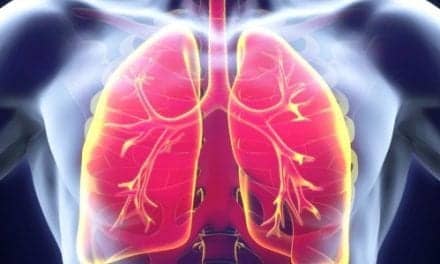Researchers have developed a new wearable system that monitors the user’s environment, heart rate, and other physical signs in order to predict and prevent an asthma attack. The research team plans to begin testing the system on a larger subject population this summer.
The system, called the Health and Environmental Tracker (HET), is comprised of a suite of new sensor devices and was developed by researchers from the National Science Foundation’s Nanosystems Engineering Research Center for Advanced Self-Powered Systems of Integrated Sensors and Technologies (ASSIST) at North Carolina State University.
The HET system incorporates a host of sensing devices, which are incorporated into a wristband and a patch that adheres to the chest, according to a Science Daily news report. The patch includes sensors that track the user’s movement, respiratory rate, heart rate, the amount of oxygen in the blood, wheezing in the lungs, and skin impedance. The wristband focuses mostly on environmental factors, monitoring volatile organic compounds and ozone in the air in addition to ambient humidity and temperature. The wristband also includes added sensors to monitor motion, heart rate, and the amount of oxygen in the blood.
In addition, the new system has a spirometer, a nonwearable component that patients breathe into several times a day to measure lung function. Data from the sensors is transmitted wirelessly to a computer where custom software collects and records the data. Alper Bozkurt, the principal investigator of a paper describing the work, says, “Our goal was to design a wearable system that could track the wellness of the subjects and in particular provide the infrastructure to predict asthma attacks, so that the users could take steps to prevent them by changing their activities or environment.”
Veena Misra, co-author of the paper, explains, “We have tested the system in the bench top and on a limited number of human subjects for proof of concept demonstration and have confirmed that all of the sensors work, and that the system accurately compiles the data. This summer, we plan to begin testing HET in a controlled environment with subjects suffering from asthma and a control group, in order to identify which environmental and physiological variables are effective at predicting asthma attacks.”
“Right now, people with asthma are asked to use a peak flow meter to measure lung function on a day-to-day basis. That information is used to inform the dosage of prescription drugs used in their inhalers,” says James Dieffenderfer, lead author of the paper. “For HET, we developed a customized self-powered spirometer, which collects more accurate information on lung function and feeds that data into the system. Preventing an attack could be as simple as going indoors or taking a break from an exercise routine.”
Photo Credit: James Dieffenderfer
Source: Science Daily











I have a niece with moderate to severe asthma,and I would be very interested in getting her into the trials. Any information would be greatly appreciated. Also we are in Alaska
thanks
Lonni